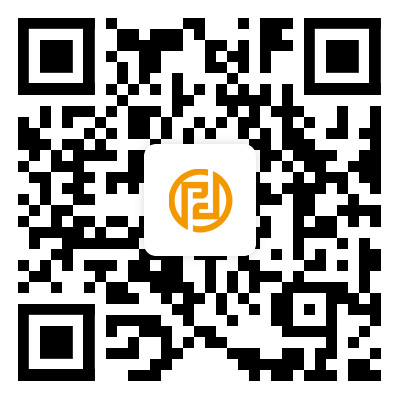 English
English Español
Español  Português
Português  русский
русский  Français
Français  日本語
日本語  Deutsch
Deutsch  tiếng Việt
tiếng Việt  Italiano
Italiano  Nederlands
Nederlands  ภาษาไทย
ภาษาไทย  Polski
Polski  한국어
한국어  Svenska
Svenska  magyar
magyar  Malay
Malay  বাংলা ভাষার
বাংলা ভাষার  Dansk
Dansk  Suomi
Suomi  हिन्दी
हिन्दी  Pilipino
Pilipino  Türkçe
Türkçe  Gaeilge
Gaeilge  العربية
العربية  Indonesia
Indonesia  Norsk
Norsk  تمل
تمل  český
český  ελληνικά
ελληνικά  український
український  Javanese
Javanese  فارسی
فارسی  தமிழ்
தமிழ்  తెలుగు
తెలుగు  नेपाली
नेपाली  Burmese
Burmese  български
български  ລາວ
ລາວ  Latine
Latine  Қазақша
Қазақша  Euskal
Euskal  Azərbaycan
Azərbaycan  Slovenský jazyk
Slovenský jazyk  Македонски
Македонски  Lietuvos
Lietuvos  Eesti Keel
Eesti Keel  Română
Română  Slovenski
Slovenski  मराठी
मराठी  Srpski језик
Srpski језик  简体中文
简体中文  Esperanto
Esperanto  Afrikaans
Afrikaans  Català
Català  שפה עברית
שפה עברית  Cymraeg
Cymraeg  Galego
Galego  繁体中文
繁体中文  Latviešu
Latviešu  icelandic
icelandic  ייִדיש
ייִדיש  беларускі
беларускі  Hrvatski
Hrvatski  Kreyòl ayisyen
Kreyòl ayisyen  Shqiptar
Shqiptar  Malti
Malti  lugha ya Kiswahili
lugha ya Kiswahili  አማርኛ
አማርኛ  Bosanski
Bosanski  Frysk
Frysk  ភាសាខ្មែរ
ភាសាខ្មែរ  ქართული
ქართული  ગુજરાતી
ગુજરાતી  Hausa
Hausa  Кыргыз тили
Кыргыз тили  ಕನ್ನಡ
ಕನ್ನಡ  Corsa
Corsa  Kurdî
Kurdî  മലയാളം
മലയാളം  Maori
Maori  Монгол хэл
Монгол хэл  Hmong
Hmong  IsiXhosa
IsiXhosa  Zulu
Zulu  Punjabi
Punjabi  پښتو
پښتو  Chichewa
Chichewa  Samoa
Samoa  Sesotho
Sesotho  සිංහල
සිංහල  Gàidhlig
Gàidhlig  Cebuano
Cebuano  Somali
Somali  Тоҷикӣ
Тоҷикӣ  O'zbek
O'zbek  Hawaiian
Hawaiian  سنڌي
سنڌي  Shinra
Shinra  Հայերեն
Հայերեն  Igbo
Igbo  Sundanese
Sundanese  Lëtzebuergesch
Lëtzebuergesch  Malagasy
Malagasy  Yoruba
Yoruba
吊鉤式拋丸機安裝試機注意事項
2021-06-03
這吊鉤式拋丸機一般外觀較大,安裝過程相對比小型設備複雜。正確的安裝和試機是保證後期設備正常運行的關鍵。在初次操作不熟練的情況下,請用戶嚴格按照相關人員的指示或參照使用說明進行操作。未經授權的操作很容易造成不可逆轉的損壞吊鉤式拋丸機. 這shot blasting machine manufacturer has sorted out the precautions for installation and test machine to share with you. I hope it will be helpful to users who use the device for the first time.
1. Installation. 這吊鉤式拋丸機 is installed and debugged in the production plant and disassembled into several parts before being transported to the user site for installation. Although there is no pit, the foundation must be firm, the anchor bolt holes must be standardized, and the chamber body must be adjusted. After the second irrigation, the anchor bolt nuts can be tightened after solidification. After the chamber body is fixed, the various parts can be installed. 這precautions for the installation and debugging of the relevant components are introduced below.
1、拋丸裝置:
這shot blasting device has been installed on the chamber body before leaving the factory. Please pay attention to the problems to be debugged before use. Check whether the fixed positions of the blade, the pill wheel, the directional sleeve, and the guard plate are accurate and firm, and check whether the direction of rotation is correct after power on. Then adjust the position of the directional sleeve opening. Theoretically, the angle between the front edge of the directional opening and the front edge of the blade throwing position is about 900. After fixing the position of the directional sleeve, the position of the projectile belt can be detected by hanging Place a steel plate or wooden board on the position of the workpiece facing the exit of the shot blasting machine, start the shot blasting machine, put a small amount (2-5kg) of projectiles into the blasting tube, and then stop, check whether the hit position on the steel plate is suitable for the needs, such as Close the window of the bias-adjustable directional sleeve downwards, and vice versa, until it fits, and note the position of the directional sleeve opening as a basis for future replacement of the directional sleeve.
2、提昇機和螺旋輸送機:
首先進行空載試驗,檢查提升斗和螺旋葉片的運行方向是否正確,然後將提昇機的皮帶張緊到適度的張緊度以避免跑偏,然後進行負載試驗檢查運行和輸送能力,是否有任何異常噪音和振動,檢查並清除障礙物。
3、丸砂分離機:
先檢查閘板運動是否靈活,再檢查隔板位置是否正確,然後在葫蘆裝車調試時,鋼丸是否不斷流入,檢查鋼丸是否有流出和落下當溜槽卸料時
1. Installation. 這吊鉤式拋丸機 is installed and debugged in the production plant and disassembled into several parts before being transported to the user site for installation. Although there is no pit, the foundation must be firm, the anchor bolt holes must be standardized, and the chamber body must be adjusted. After the second irrigation, the anchor bolt nuts can be tightened after solidification. After the chamber body is fixed, the various parts can be installed. 這precautions for the installation and debugging of the relevant components are introduced below.
1、拋丸裝置:
這shot blasting device has been installed on the chamber body before leaving the factory. Please pay attention to the problems to be debugged before use. Check whether the fixed positions of the blade, the pill wheel, the directional sleeve, and the guard plate are accurate and firm, and check whether the direction of rotation is correct after power on. Then adjust the position of the directional sleeve opening. Theoretically, the angle between the front edge of the directional opening and the front edge of the blade throwing position is about 900. After fixing the position of the directional sleeve, the position of the projectile belt can be detected by hanging Place a steel plate or wooden board on the position of the workpiece facing the exit of the shot blasting machine, start the shot blasting machine, put a small amount (2-5kg) of projectiles into the blasting tube, and then stop, check whether the hit position on the steel plate is suitable for the needs, such as Close the window of the bias-adjustable directional sleeve downwards, and vice versa, until it fits, and note the position of the directional sleeve opening as a basis for future replacement of the directional sleeve.
2、提昇機和螺旋輸送機:
首先進行空載試驗,檢查提升斗和螺旋葉片的運行方向是否正確,然後將提昇機的皮帶張緊到適度的張緊度以避免跑偏,然後進行負載試驗檢查運行和輸送能力,是否有任何異常噪音和振動,檢查並清除障礙物。
3、丸砂分離機:
先檢查閘板運動是否靈活,再檢查隔板位置是否正確,然後在葫蘆裝車調試時,鋼丸是否不斷流入,檢查鋼丸是否有流出和落下當溜槽卸料時
以前的:拋丸機的組成部分介紹
X
We use cookies to offer you a better browsing experience, analyze site traffic and personalize content. By using this site, you agree to our use of cookies.
Privacy Policy


